If you care enough to know what damage, real damage, from a cyclone looks like at a coral reef, get yourself to Townsville and book a trip with Adrenalin Snorkel and Dive to John Brewer Reef.
It is not hard to describe parts of John Brewer Reef three weeks after cyclone Kirrily. My dive buddy, and one of the best underwater cinematographers in the world, Stuart Ireland, described what was once my favourite underwater crevasse overlaid with massive, perfectly arranged, pink plate corals, he now describes it as:
‘Bull in a China Shop Alley.’
All the corals have been picked-up, flipped-over, and smashed-up, at this section of John Brewer Reef.
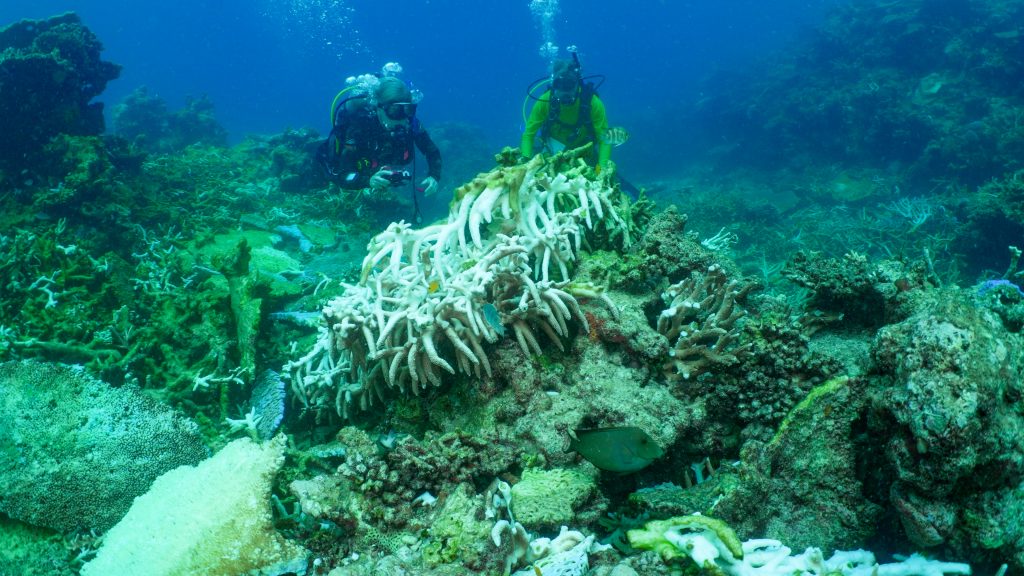
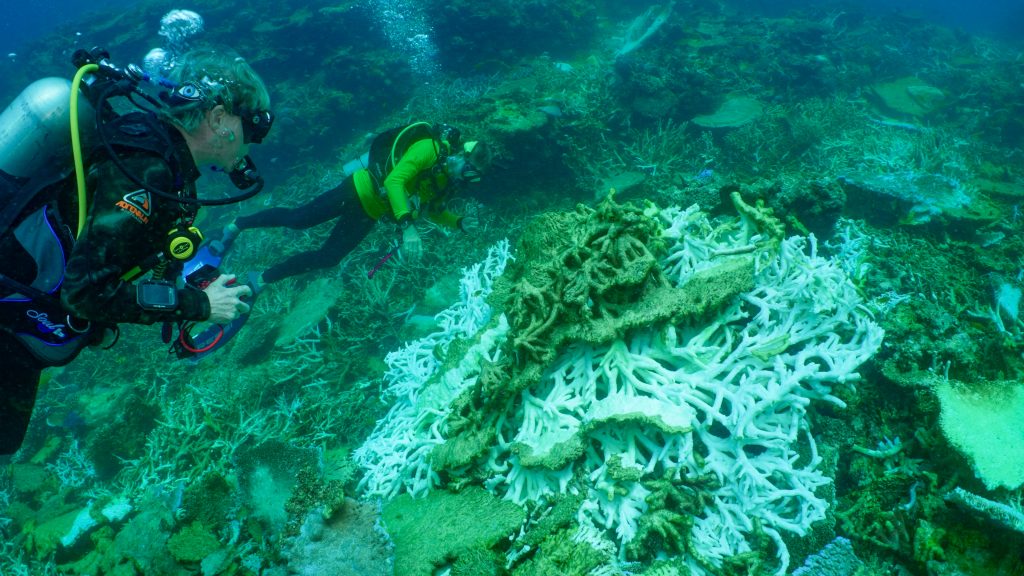
The plate corals were once so large, and back in April 2022, it was all so aesthetically pleasing because the corals were the right way up, growing together, tastefully arranged, delicately balanced, at varying heights, and a lovely pink.
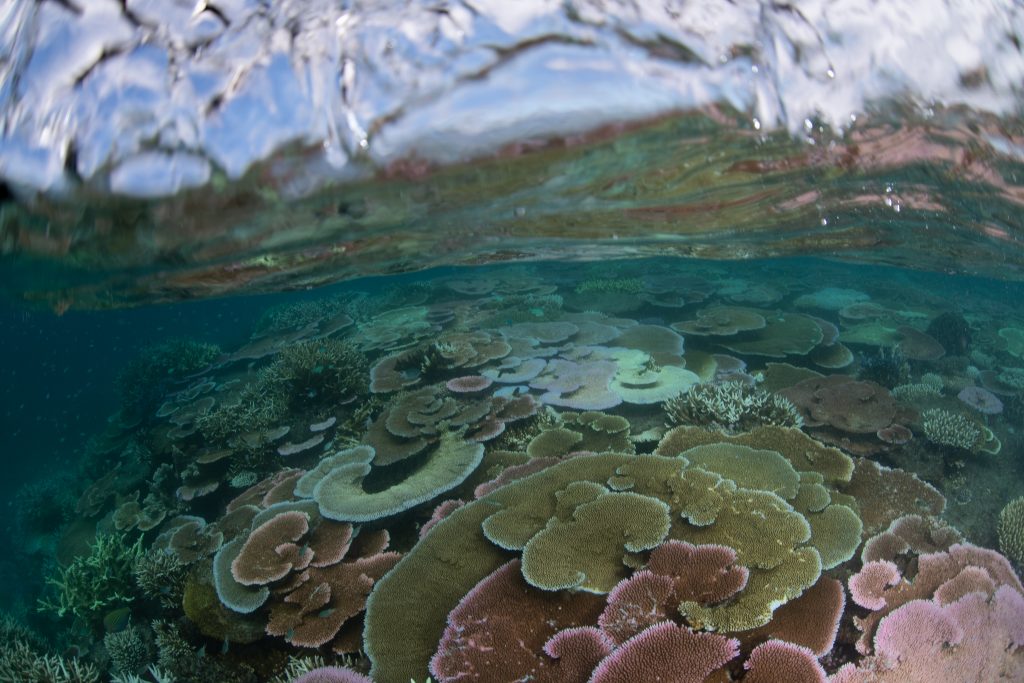
Many of these massive corals that you can see in our film, ‘Bleached Colourful’, they have been lifted and flipped over. Such was the power of tropical cyclone Kirrily, barely a category three system as it passed over John Brewer reef.
If you enjoy a good horror film, and you fancy yourself as much more than an armchair environmentalists get out to this reef. Now.
I described this reef, John Brewer Reef, as the most colourful and beautiful reef that I have ever seen, that was when this same coral reef was making headlines around the world as being at the epicentre of a sixth mass coral bleaching, that was in April 2022 – two years ago. There were a few corals that had bleaching white, but most of the reef was intact and so colourful.
Cyclone Kirrily passed directly over the top of John Brewer Reef on Thursday January 25, 2024. As you might visit a friend in hospital consider taking the time to swim with these corals now – the corals as they struggle in recovery.

There are patches of coral that survived the cyclone at John Brewer Reef; there is coral that is still intact and upright with so many fishes, including most of the corals below 7 metres. So, you can still see good coral and lots of colourful fishes, especially if you go deep.
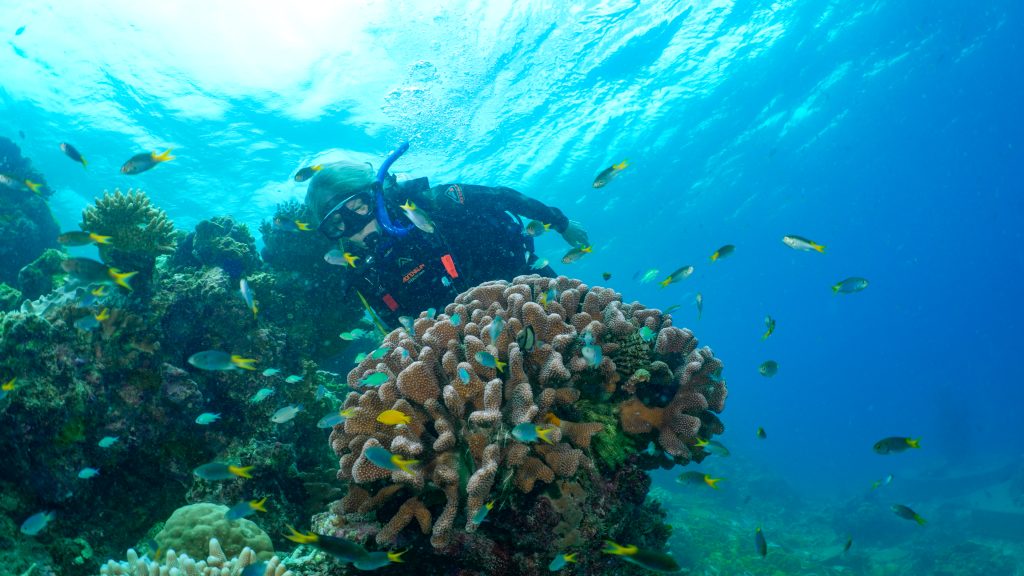
But my favourite crevasse, and across the reef crest, well the large staghorn/branching corals have been mowed to stubble at the reef crest, and many of the plates scoured back to ugly grey with a thin layer of light green algae.
Dive Master, Skipper and Owner of Adrenalin Snorkel and Dive, Paul Crocombe, assures me these are a perfect surface now for mass recruitment, mass recruitment after the next coral spawning.
He is confident there will be a mass of dinner size plate corals across the reef crest at John Brewer within 5 years.
In the meantime, I’m planning to visit for the spawning in November, and I plan to return after that to see the very first polyps establish and so hopefully – there will be mass recolonisation of this reef crest.
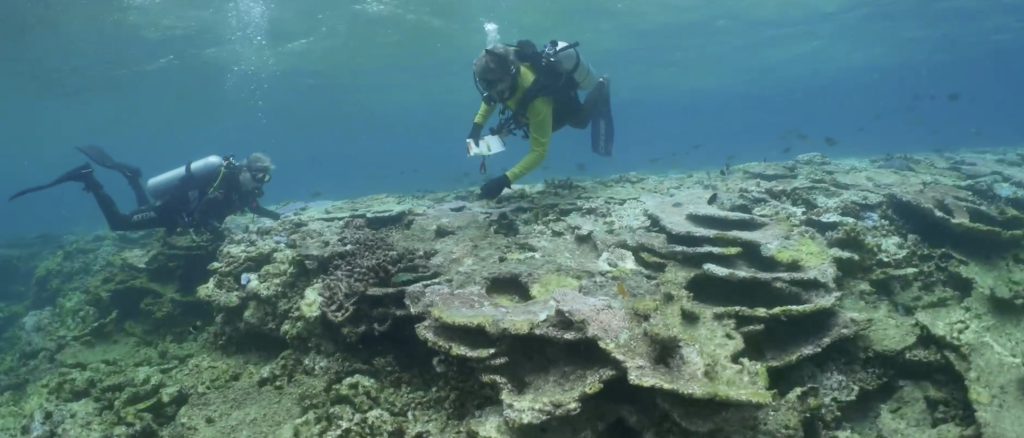
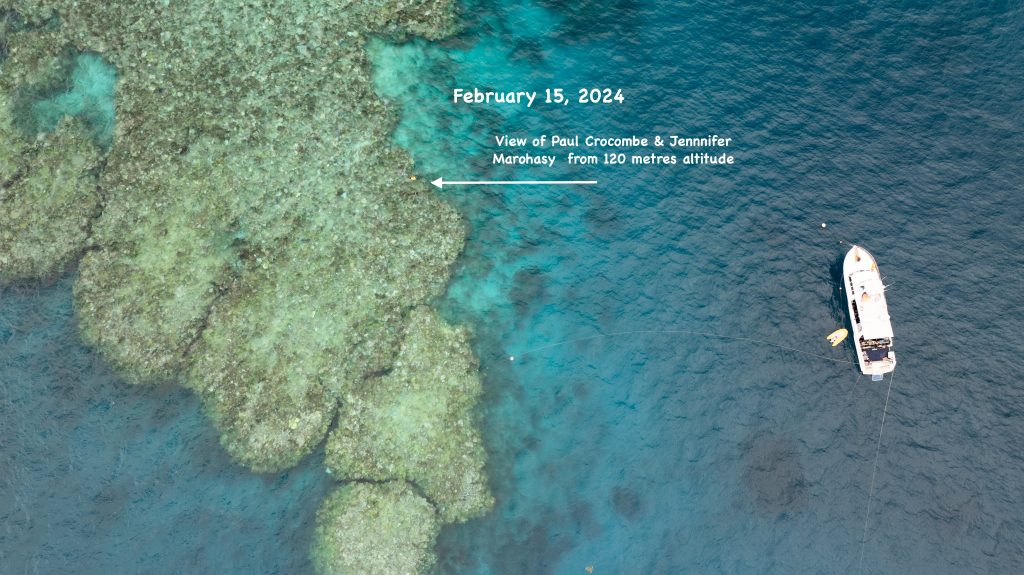

*****
Book your trip with Adrenalin Snorkel and Dive. This is a once in a lifetime opportunity to see a reef scoured by a cyclone, particularly given both the number and intensity of cyclones is on the wane. Thank goodness.
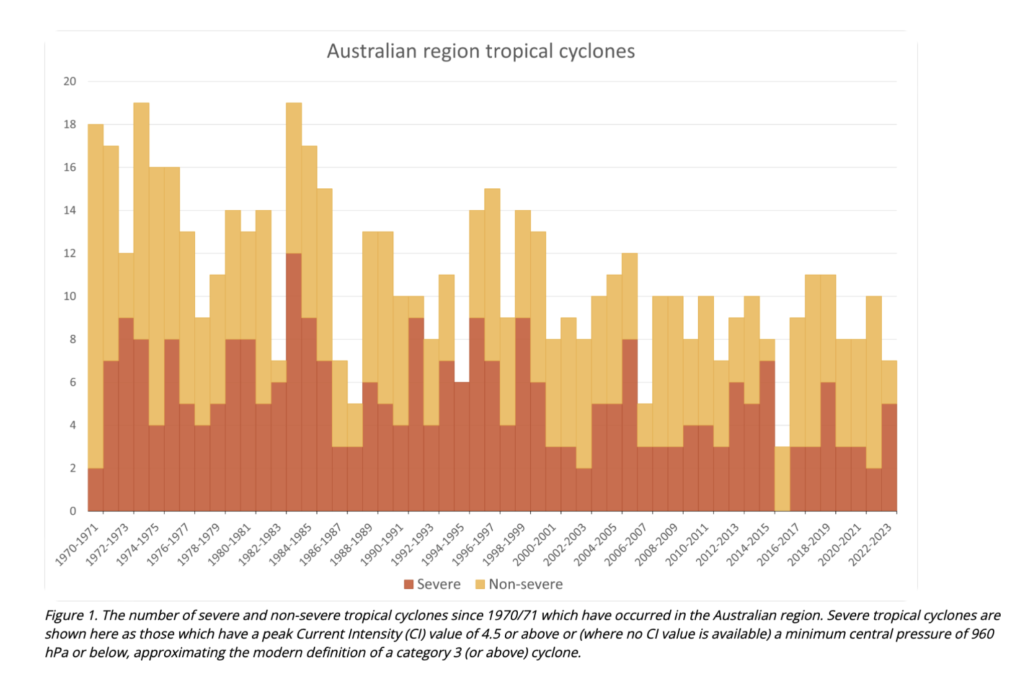

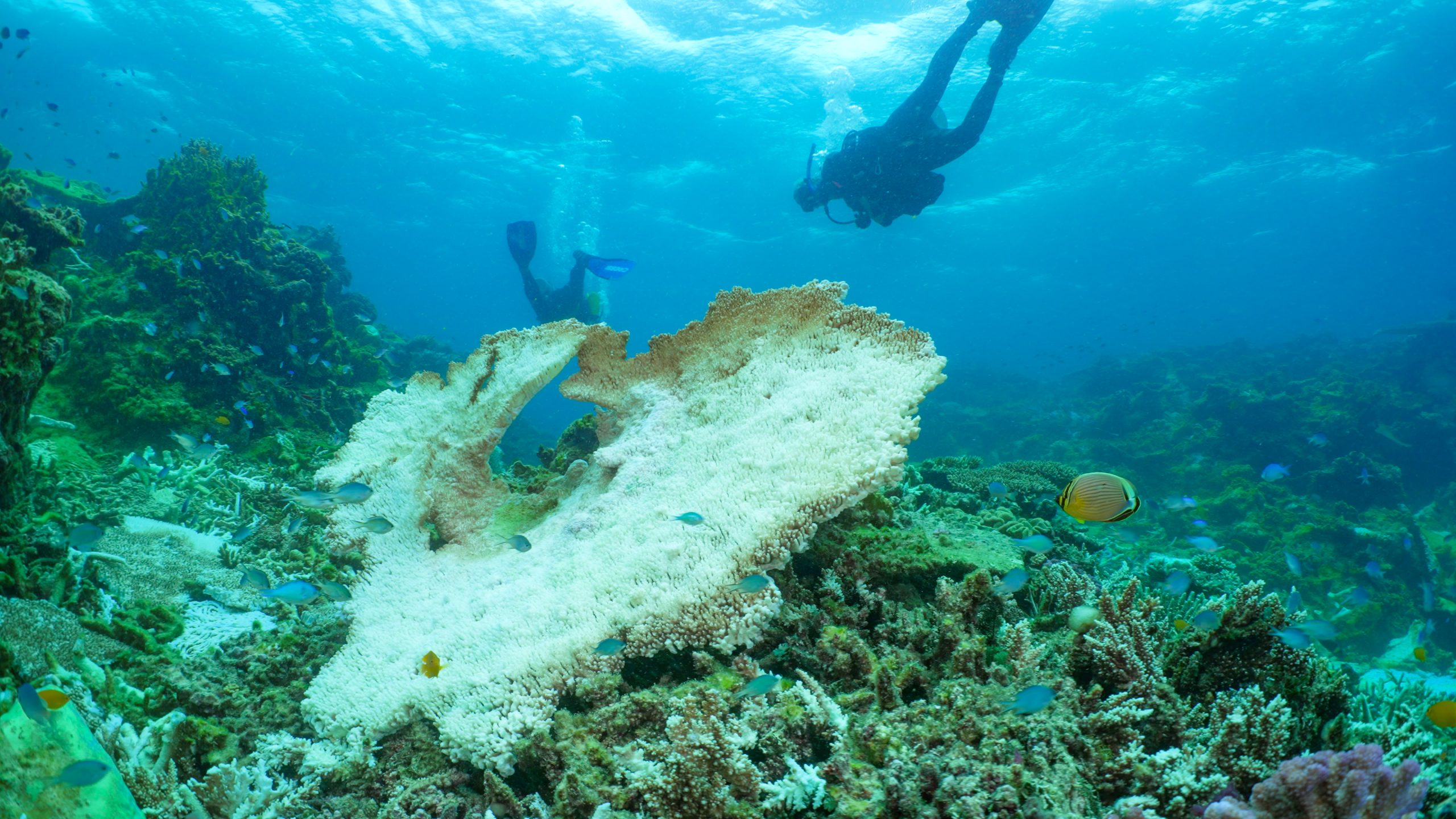
 Jennifer Marohasy BSc PhD is a critical thinker with expertise in the scientific method.
Jennifer Marohasy BSc PhD is a critical thinker with expertise in the scientific method.

That figure represents the Australia region, not just Queensland. Facts matter. Speaking of facts, why not quote the BoM text?
“There remains uncertainty in the future change in tropical cyclone frequency (the number of tropical cyclones in a given period) projected by climate models, with a general tendency for models to project fewer tropical cyclones in the Australia region in the future climate and a greater proportion of the high intensity storms (stronger wind speeds and heavier rainfall).
Wind speed is only one aspect of tropical cyclones and their impacts. The amount of heavy precipitation from all weather systems, including tropical cyclones, is likely to increase. Increased rainfall intensity from tropical cyclones is pertinent to Australia, since these storms have historically been associated with major flooding.
Additionally, increases in storm surges and extreme sea-levels are very likely to occur in association with tropical cyclones under future climate change. This change is independent of changes in tropical cyclone intensity and is directly related to increases in global mean sea-level due to global warming.
Projected changes in tropical cyclone characteristics are inherently tied to changes in large-scale patterns such as the El Niño – Southern Oscillation, changes in sea surface temperature and changes in deep convection. As global climate models improve, their simulation of tropical cyclones is expected to improve, thus providing greater certainty in projections of tropical cyclone changes in a warmer world. ”
****
Jennifer says: Thanks Alan. I have added in the ‘Australian region’. Regarding the Bureau’s forecasts: certainly almost every year for the last decade the Bureau has forecast an increase in both the number and intensity of cyclones, yet the trend is in the opposite direction and quite dramatically. Have you any explanation for the reduction in number and intensity of cyclones?
Geologically speaking, as a carbonate stratigrapher, storm damage is a very effective way of dispersing reef bits and pieces to receptive locations for expansion of the reef habitat for all reef dwellers. Short term pain for long term gain…
“Speaking of facts, why not quote the BoM text?”
You mean their dry summer prediction?
From James Cook University, February 22 2024:
As ocean temperatures continue to warm over the Great Barrier Reef this summer, James Cook University scientists have reported areas of moderate to severe coral bleaching around the Keppel Islands, offshore from Rockhampton.
The bleaching was observed during routine surveys, as part of a 25-year program tracking changes in fish communities and coral reef habitats at 42 Great Barrier Reef islands. These islands are highly valued and frequented by tourists, recreational fishers, and local communities.
James Cook University’s Centre for Tropical Water and Aquatic Ecosystem Research (TropWATER) scientist Dr Maya Srinivasan said the water temperatures at the Keppel Islands were well above the summer average, reaching 29C in the water during multiple days of surveys.
“I have been working on these reefs for nearly 20 years and I have never felt the water as warm as this,” she said.
“Once we were in the water, we could instantly see parts of the reef that were completely white from severe bleaching. Some corals were already dying.”
Heat stress is the primary cause of coral bleaching. While severely bleached corals will likely die if the water temperature remains higher than normal for too long, they can also recover if ocean temperatures stabilise.
The team surveyed 27 sites at the Keppel Islands, with most sites showing signs of bleaching, and only deeper areas of reefs relatively unimpacted by heat stress.
“Although some corals were already dying, many of the corals could recover if the water cools in the coming weeks, and we did see the temperatures begin to drop towards the end of the trip.”
The Keppel Islands is a highly visited island group in the Great Barrier Reef, used by tourists, locals, and recreational fishers. Decades of monitoring have shown coral reefs and fish communities at some reefs are resilient and have recovered from past bleaching events.
“We have seen fish abundance decline as coral cover declines in this region following past impacts like this. But we have also seen the recovery of coral and fish communities on many areas of reef – there just needs to be enough time between impacts to allow this recovery to occur.”
Dr Srinivasan said that heat stress typically peaks in the summer months over the Great Barrier Reef. Should high temperatures persist, the likelihood of more widespread bleaching across other parts of the reef increases.
“Island reefs also face heightened vulnerability due to their inshore location, making them more susceptible to impacts like water quality issues, coral bleaching and overfishing,” she said.
“Given the high vulnerability of island reef habitats matched with their high use, it’s important to have an understanding of the nuances of impacts and recovery – this will help managers adjust their management strategies.”
The team will now survey reefs in the far northern Great Barrier Reef, following extensive floods in January. Magnetic Island, near Townsville, and the Cumberland Islands, offshore from Mackay, will also be surveyed in the coming weeks.
The monitoring program includes more than 42 islands in eight key island locations from the far north to southern Great Barrier Reef. The program also tracks the effectiveness of marine park zoning with survey sites in both no-take areas and areas open to fishing.
“Through rigorous monitoring, we aim to uncover insights into why certain reefs may exhibit slower recovery rates, and why some fish populations might thrive on some reefs and not others.”
“All this provides vital information for targeted intervention and management strategies.”
The program is funded by the partnership between the Australian Government’s #ReefTrust and the Great Barrier Reef Foundation. This project is part of a joint program managed by the Australian Institute of Marine Science, in partnership with JCU TropWATER, University of the Sunshine Coast, Great Barrier Reef Marine Park Authority and Queensland Agriculture.
Jennifer, whilst I fully understand your dismay over a reef of which you have so much knowledge, this is a natural event that could have happened to any reef and of course has done on a regular basis since time immemorial. But on the bright side, your sixth sense to survey and record the reef in recent years proves to be fortuitous and provides and almost unique opportunity to document the recovery process and establish at least one reliable before and after record. It will inevitably take quite a few years, perhaps ten or more. Whatever AIMS or James Cook University do is unlikely to be as rigorous, and given their overtly politicised and ethically dubious record in recent years will always be questionable for veracity.
I wish you luck whatever you decide to do.
Many years back I read about a Red Sea reef that had been ndynomited to make a channel for a port. Within about 10 years it had largely regrown. That of course is less than a heartbeat in geological time.
Many years back I read about a Red Sea reef that had been dynamited to make a channel to a new port. Within 10 years it had regrown.
Aerial surveys conducted by the Reef Authority in collaboration with the Australian Institute of Marine Science (AIMS) spanning two-thirds of the Marine Park confirm that a widespread coral bleaching event is unfolding across the Great Barrier Reef.
Observations were collected from over 300 inshore, midshelf and offshore reefs, from Cape Melville north of Cooktown to just north of Bundaberg (southern boundary of the Marine Park). Some areas are yet to be surveyed.
Reef Authority Chief Scientist Dr Roger Beeden said the results of these surveys are consistent with the patterns of heat stress that have built up over summer.
“The results are consistent with what we have seen with above average sea surface temperatures across the Marine Park for an extended period of time,” Dr Beeden said.
“Aerial surveys of the Reef have revealed prevalent shallow water coral bleaching on most surveyed reefs.
“It is important to note, that the heat stress has not been even across the Reef, and the coral bleaching observed is variable.
“Monitoring the health of the Reef is a year-round effort for the Reef Authority, and it’s critical for us to understand what is happening on the Reef so we can target our management actions to protect the Reef and strengthen its resilience,”
“Climate change is the greatest threat to the Great Barrier Reef, and coral reefs globally,” Dr Beeden said.
This unfolding coral bleaching event follows similar reports from reefs around the world during the past 12 months. Reefs in the Northern Hemisphere have suffered coral bleaching as a result of climate change which has driven elevated sea surface temperatures, amplified by El Niño conditions in the Pacific Ocean.
AIMS Senior Research Scientist Dr Neal Cantin said that the aerial surveys provide a visual indication of the extent of bleaching. However, assessing the severity to coral colonies requires in-water surveys.
“Aerial surveys are a crucial tool for a reef ecosystem as large as the Great Barrier Reef and show that this coral bleaching event is widespread, or what is commonly called a mass coral bleaching event,” Dr Cantin said.
“We now need to combine the spatial coverage captured from the air with in-water surveys to assess the severity of coral bleaching in deeper reef habitats across the different regions of the Marine Park,” he said.
“We will continue to conduct in-water observations with our research teams and management partners.”
Dr Cantin added that bleaching was a stress response from which corals could recover, depending on the duration and intensity of heat stress. However, prolonged, or intense heat could result in coral mortality.
While under pressure, the Great Barrier Reef remains a vast and beautiful ecosystem. Actions to protect the Reef are now more important than ever – everyone has a role to play in helping protect the Reef for future generations.
“The Great Barrier Reef is bigger than Italy, and it is important to remember that impacts to the Reef are highly variable. The Reef has demonstrated its capacity to recover from previous coral bleaching events, severe tropical cyclones, and crown-of-thorns starfish outbreaks.” Dr Beeden said.
The Reef Authority will continue to work closely with research and other science partners, Traditional Owners, and the tourism industry to monitor conditions on the Reef.
March 8 2024
Diana Kleine, project manager of Coral Watchat the University of Queensland, has been at Heron Island off Gladstone in the reef’s south.
“It’s devastating. Unbelievable. The water was way too warm. Heron has escaped bleaching several times but this year it has hit so hard,” she said.
Coral Watch has observed 4-metre-wide boulder corals that take hundreds of years to grow bleached bone white.
Lyle Vail, co-director of the Australian Museum’s Lizard Island Research Station in the north of the reef, said corals started to show heat stress in early February.
He said: “It’s devastating. Pretty much all of the heat-sensitive corals in the shallow waters have bleached.”
The alarm is understandable but motivated by climate paranoia and consensus.. Reefs through time are spread and renewed by storms. Geological history has millions of examples in the stratigraphic record.